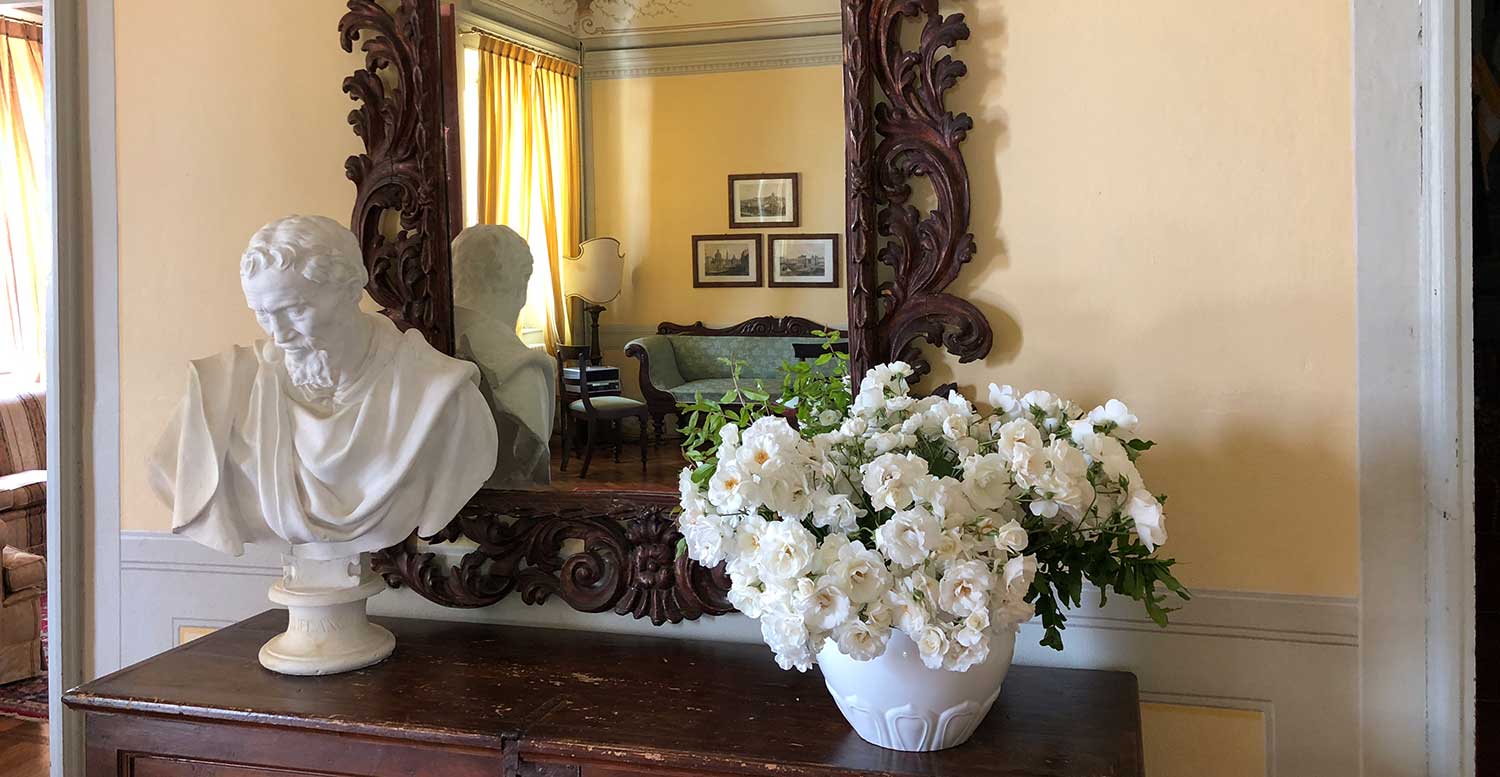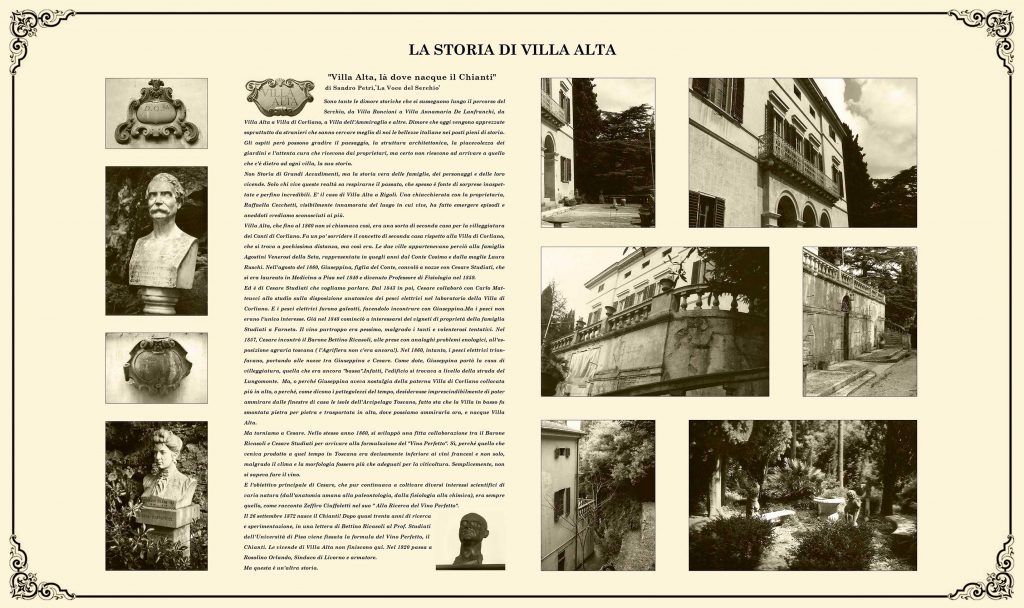THE STORY
Best price guaranteed
Best price guaranteed
VILLA ALTA
HISTORICAL RESIDENCE
The charm of a historic 19th-century residence, the scents and beauty of a park with rich and varied vegetation, the suggestive and enchanting panorama stretching from Piazza dei Miracoli in Pisa to the sea make Villa Alta one of the most elegant and charming places in the Pisan territory.
The interior is characterized by numerous ‘grotesque’ frescoes.
The grotesques are a particular type of wall painting decoration, which has its roots in the Roman painting of the Augustan age and which was rediscovered and popularized from the end of the fifteenth century.
They are decorations characterized by the depiction of hybrid and monstrous beings, chimeras, often portrayed as slender and extravagant figures, which blend into geometric and naturalistic decorations, structured symmetrically, against a usually white or monochromatic background. The figures are very colorful and give rise to frames, maintaining a certain levity because the subjects are rendered in minute detail.
The Villa is surrounded outside by a terraced park with centuries-old trees and an Italian garden with aromatic plants and climbers. The entrance avenue is lined with cypress trees, plane trees, oaks, palms, and laurel hedges, as well as plants such as yucca, oleander, acacia, holly, and bamboo. On the hill behind the villa, there is an olive grove with approximately 800 olive trees.
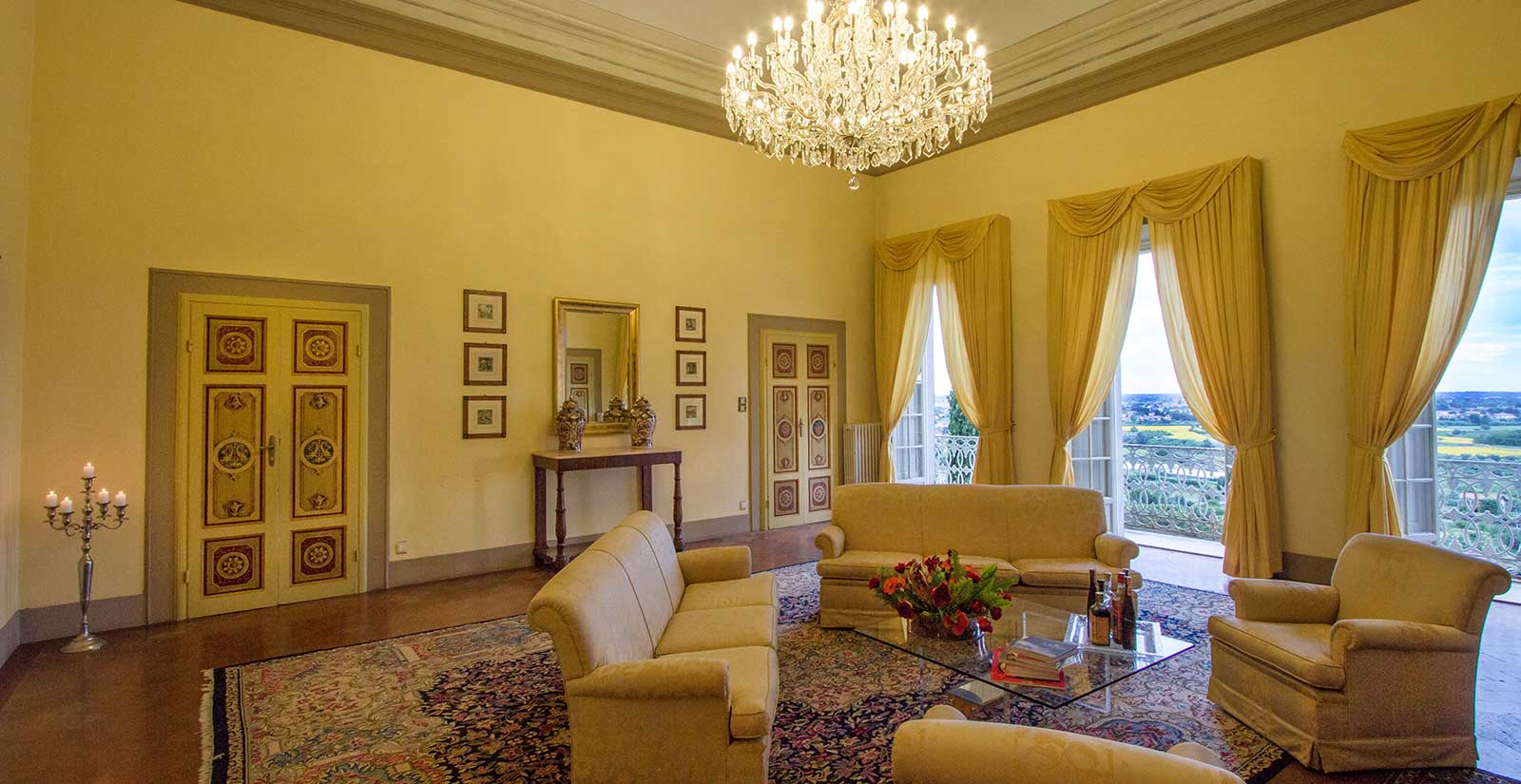
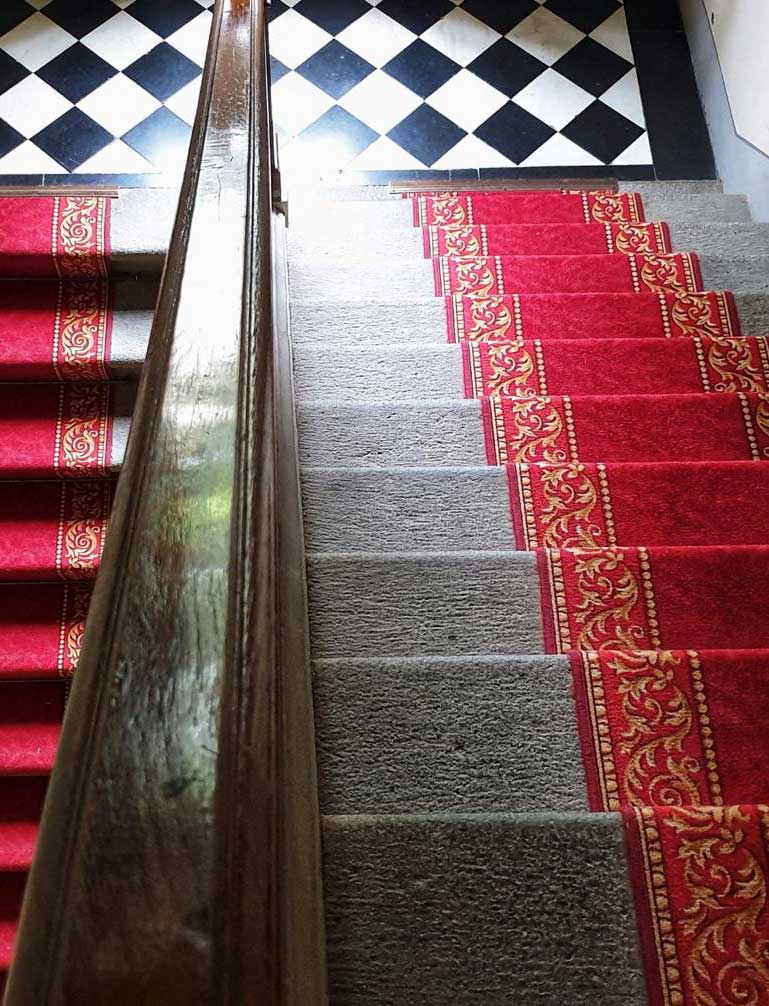
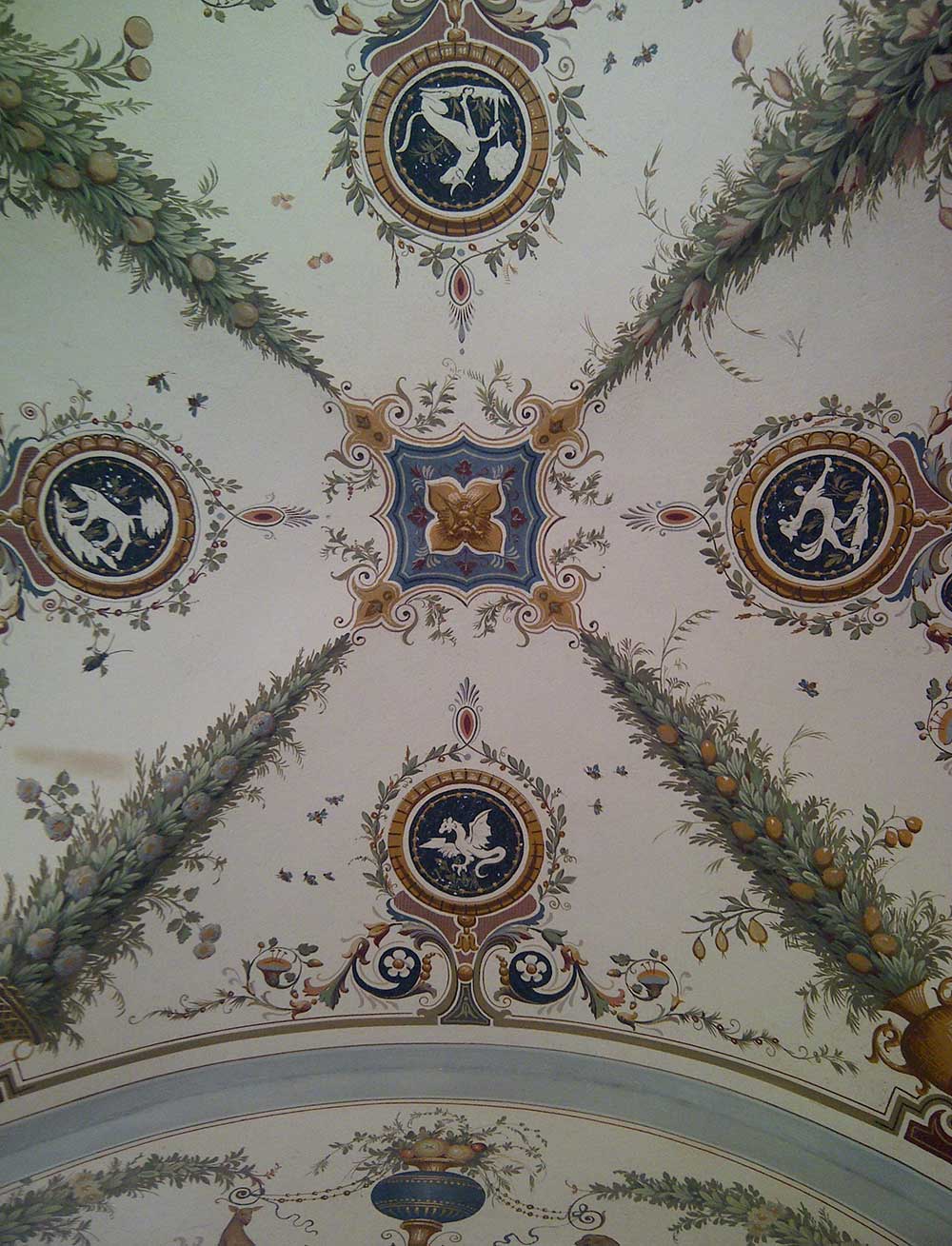
VILLA ALTA
The beginnings
The Villa boasts a long and fascinating history dating back to the early 19th century when it was acquired by Cesare Studiati following his marriage to Giuseppina Agostini Venerosi della Seta, daughter of Count Cosimo and Laura Ruschi, in August 1860.
The Agostini family recalls how the villa was originally built lower down inside the Corliano estate, but Cesare Studiati wanted to dismantle it to rebuild it higher up, thus allowing his wife, Giuseppina Agostini, to be able to see the islands.
Cesare Studiati was the most illustrious of the owners. The son of Pietro Studiati, he graduated in philosophy and medicine from the University of Pisa on June 16, 1840, and the following year he also obtained a degree in surgery. In October 1843, he was appointed dissector by Paolo Savi. As a deputy to the Tuscan Constituent Assembly, he declined to participate in the Italian one to avoid interrupting his studies, also refusing the honorary position of Gonfaloniere of Pisa, offered by Ricasoli. He nonetheless took an active part in politics as a municipal and provincial councillor, and for 35 years served as president of the Cassa di Risparmio di Pisa (Savings Bank of Pisa). An important encounter was with Baron Bettino Ricasoli, with whom he began a scientific and oenological partnership, confirmed by a rich correspondence spanning from 1859 to 1876 in search of the ‘perfect wine’. The two aimed to eliminate a certain ‘harshness’ and ‘roughness’ that the wines acquired during the aging process, in comparison to the ‘refinement’ of the already established French wines in the international market.
In 1872, Chianti was born, after more than thirty years of research and experimentation. Baron Bettino Ricasoli established its formula in a famous letter addressed to Prof. Cesare Studiati, which envisaged 70% Sangiovese red grapes and the remaining 30% divided between Canaiolo and white Malvasia grapes. In 1920, the Villa was sold to Carlo Tabet (a friend of architect Pietro Studiati – son of Cesare), who sold it just 1 year later to Carla Ciompi, wife of Carlo Ciompi, the podestà (mayor) of San Giuliano Terme during the years of fascism, as reported by the newspaper ‘Il Ponte di Pisa’ in 1933 and 1931. In 1936, Villa Alta became the property of Donna Teresa Orlando, daughter of Rosolino Orlando, an Italian entrepreneur, philanthropist, and politician, belonging to the third generation of the Orlando family of shipowners. He was one of the protagonists of Livorno’s life at the beginning of the 20th century, also as a promoter of important initiatives aimed at the improvement of the city, of which he was also the mayor. During fascism, this residence became a strategic location due to its favorable position for controlling the territory. In 1947, it was purchased by Cilene Ida Mugnaini, who had all the rooms painted yellow, covering their valuable frescoes. Her bust is located in the Italian garden of the villa. In 1992, Armando Cecchetti bought it from the former coach of Genova Scoglio. He had it renovated, bringing to light and restoring much of the original splendor of the frescoes such as the “Paradiso room,” the “Angels’ room,” and the “Music room.
VILLA ALTA
Today
Today, thanks to the commitment and dedication of the Cecchetti heirs, Villa Alta is a residence that combines the enchantment of the past with a charming place equipped with all the modern comforts. There is the warmth and hospitality of a family environment and attention to every little detail. It is the ideal place to spend your holidays or stays immersed in the peace and tranquility of the gentle Tuscan hills, but it is also a wonderful and perfect place to celebrate the most beautiful days in a landscape and artistic setting of great beauty and splendor.
